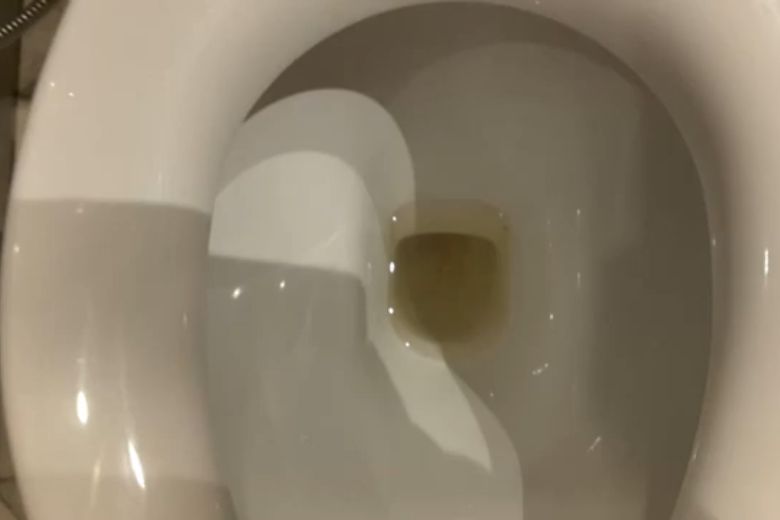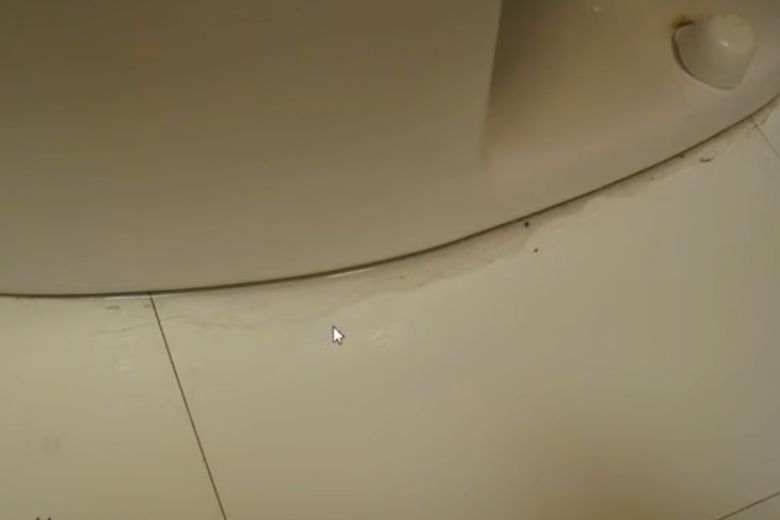Ever looked at your toilet and wondered, “Why is my toilet water yellow?” Although it is a common issue, we are hardly comfortable discussing it openly. Since not only is it aesthetically unpleasing, but it also raises concerns about the cleanliness of our homes and personal hygiene.
However, toilet water can turn yellow for various reasons, the most common being rust in the water pipes, minerals in the water supply, or bacterial growth in the toilet tank. For instance, iron and manganese in your water supply can give it a yellow or brown tint. At the same time, certain bacteria can create a yellow biofilm.
No matter the reason, you must learn the leading cause behind it and take preventive measures to solve the issue.
Let’s start.
Why is My Toilet Water Yellow? Possible Causes and Solutions
To better understand why your toilet water may be turning yellow, you must explore the possible underlying reasons. Consequently, we have discussed a few common causes and offer insights into what steps you can take to resolve the issue.
Have a look one by one.
Cause 1: Mineral Buildup: The Silent Culprit
One of the most frequent reasons for yellow toilet water is mineral buildup. Sometimes minerals like iron and manganese are present in your water supply. They can accumulate in your toilet as time passes, causing the water to take on a yellow hue.
If mineral deposits are the issue, you may also notice rust-colored stains on sinks, bathtubs, and clothes washed in the same water.
The Solution is Straightforward:
Install a water-softening system. It helps to reduce the concentration of calcium, magnesium, and other minerals in hard water. This system works by replacing the magnesium and calcium ions in the water with sodium ions.
You can also use a commercial toilet cleaner to remove existing mineral deposits. Regular cleaning and maintenance will also prevent these minerals from accumulating and yellowing your toilet water.
Cause 2: Rusty Pipes: The Hidden Issue
Rusty pipes are another reason for yellow toilet water. As the year passes, metal pipes can corrode, and this rust can mix with the water, resulting in a yellow or brownish tint. If the yellow color is present in all water sources in your home, it’s likely a plumbing issue.
It is particularly common in homes with older plumbing systems.
Solutions
Solving the problem requires replacing your home’s plumbing system or at least the sections where the pipes are corroded. Remember, ignoring rusty pipes can lead to more severe plumbing issues, so it’s better to act sooner rather than later.
Moreover, it is a significant undertaking, so getting professional advice is wise.
Cause 3: Water Heater Problems: An Unexpected Cause
If you notice yellow water only when you flush your toilet with hot water, then it probably indicates an issue with the water heater. The interior of some water heaters becomes rusty over time. As a result, it is causing the heated water to become discolored.
Solution for Rusty Water Heater
You can start by draining and flushing your water heater to remove sediment. But in case of rust is the reason, and it gets severe, you might need to replace the water heater.
In the future, schedule regular maintenance checks. It will help to keep your heater in the best condition. Therefore, flushing it regularly also helps to prevent sediment buildup. This process involves draining the water from the tank and then refilling it.
Cause 4: Water Supply Issues: A Larger Concern
Sometimes, the cause of yellow toilet water could be due to problems with your local water supply. For instance, a disturbance in the water supply line, such as construction or repairs, can stir up sediment and cause water discoloration.
Besides, water can be naturally high in tannins in certain areas, especially those near marshlands or peat soils. Generally, a plant-based compound that can give water a yellowish color.
In addition, during certain times of the year, especially in the spring and summer, pollen can get into the water supply, tinting it yellow.
Solutions
Firstly, contact your local water provider. They can provide information about any ongoing work affecting the water supply.
Secondly, consider installing a tannin-removing water softener system. Because activated carbon filters can help remove tannins from your water.
Thirdly, a good water filtration system can help remove pollen and other particulates from your water supply. Check the water after heavy rainfall; if it’s clear, pollen is likely the issue, and a filtration system should solve it.
Cause 5: Poorly Maintained Toilet Tank
It has been a while since you cleaned your toilet tank. If yes, it could accumulate rust, grime, and mineral deposits. Therefore, these can color the water yellow.
Solutions
The immediate solution for this is regular cleaning of your toilet tank. It will prevent this issue from happening. Besides, use cleaning agents recommended by the manufacturer for existing problems. Remember to follow the instructions carefully. Remember to scrub gently to avoid damaging the toilet parts.
Cause 6: Improper Cleaning Techniques (Uncommon Reasons)
Using incorrect cleaning techniques or harsh chemicals can contribute to yellow toilet water. Abrasive cleaners or scrub brushes can scratch the porcelain surface, making it more prone to staining.
Moreover, sometimes specific cleaning agents react with the water or the porcelain in your toilet to produce a yellow color. It could be the reason you recently used a new cleaning product.
Solutions
Use non-abrasive and toilet-safe cleaning agents. If the yellow staining continues, discontinue using the current cleaning product, and try a different one. If the problem persists, contact a plumber to inspect your toilet and plumbing system.
Cause 7: Bacterial Growth
Again, bacteria in your toilet can lead to yellowish water. Bacterial growth often occurs due to inadequate cleaning and maintenance practices.
This is especially possible in toilets that aren’t frequently used, as standing water provides a suitable environment for bacterial growth. Iron bacteria is one such type that thrives in iron-rich environments and can cause the water to turn a yellow, orange, or reddish-brown color.
Although it is harmless, it gives an unpleasant odor and sight. Moreover, it can cause staining on fixtures and lead to clogs in your plumbing system if not addressed promptly.
Solutions
- Verify the issue through a water test from a certified lab to confirm if bacteria are the cause.
- If necessary, introduce a large amount of chlorine into your water system to
- If the issue persists, consider installing a continuous chlorination and filtration system to eliminate and remove any bacteria constantly.
- Install a water softener system to reduce iron concentration in your water, hence preventing iron bacteria growth.
Cause 8: Environmental Factors
Environmental factors, such as nearby construction or water treatment processes, sometimes influence your toilet watercolor. Sediments or particles stirred up during construction activities or changes in the water treatment process can lead to discoloration.
Once more, issues with local water infrastructure, such as rusting pipes and seasonal changes are also involved in this matter.
Solution:
- Install a whole-house water filtration system to remove impurities and minerals.
- Use a water-softening system to treat hard water.
- Report infrastructure issues to your local water authorities for repair or upgrades.
- Flush your water system regularly, especially during seasons when discoloration is common.
- Hire a professional to inspect your home’s plumbing system for specific issues and solutions.
Alternative Home Remedies Solution
Before panicking and calling a professional, you can also try home remedies. Have a look.
- Vinegar and Baking Soda: First, drain the water from your toilet bowl. Then, sprinkle baking soda around the bowl, followed by vinegar. Let the mixture sit for about 15 minutes before scrubbing and flushing.
- Lemon Juice: The natural acidity of lemon juice can help to break down rust or mineral stains. Apply the juice to any stained areas, let it sit for a few minutes, then scrub off.
- Borax: Borax can be used as a toilet cleaner to help remove stains and discoloration. Sprinkle it in the bowl, scrub it with a toilet brush, then let it sit overnight before flushing.
- Hydrogen Peroxide: Hydrogen peroxide is a natural cleaner and whitener you can pour into your toilet tank to help clean it. As with the vinegar and baking soda method, you must turn off and empty the tank first.
- Filtered Water Pitcher: If the yellow color is due to impurities in your water supply, using a filtered water pitcher to fill the toilet tank can be a temporary solution.
Professional Plumbing Services:
Sometimes, the problem runs more profound, and home remedies just won’t cut it. In such cases, it’s time to call in the cavalry.
Frequently Asked Questions
Why is my toilet water yellow but tap water clear?
Answer: This is usually a sign of bacterial growth in the toilet bowl and not an issue with your water supply. Regular cleaning should resolve the issue.
Why is my toilet water yellow after vacation?
Answer: If you notice yellow toilet water after returning from a vacation, it could be due to stagnant water in your pipes or toilet tank. Flushing a few times should clear it up.
How can I differentiate between temporary and long-term discoloration?
Answer: Temporary discoloration is often related to external factors like water supply issues or environmental factors. If the discoloration persists or worsens over time, it’s recommended to investigate potential underlying causes.
Can yellow toilet water be harmful?
Answer: While it’s usually not harmful to touch, it can be if ingested. Always seek professional help if unsure.
Should I replace my pipes if my toilet water is yellow?
Answer: Not necessarily. First, identify the cause of the yellowing. If rusty pipes are the culprit, then consider replacing them.
Is professional help necessary to treat yellow toilet water?
Answer: It depends on the cause. Minor issues like mineral deposits might be resolved with regular cleaning. However, problems like rusty pipes or bacterial contamination might require professional intervention.
Conclusion
Dealing with yellow toilet water can be a nuisance, but you can’t leave it untreated. However, with the proper knowledge and approach, you can identify the problem and take appropriate steps to solve it. Pay attention to the yellow water. Always remember your home’s plumbing is like your house’s circulatory system. Keep it healthy. Keep it clear!
Paul Newman is a blogger who writes about plumbing and home improvement. Over the past 20 years, I have worked as a plumber. My passion is to share my knowledge and experience with others to improve their homes.




